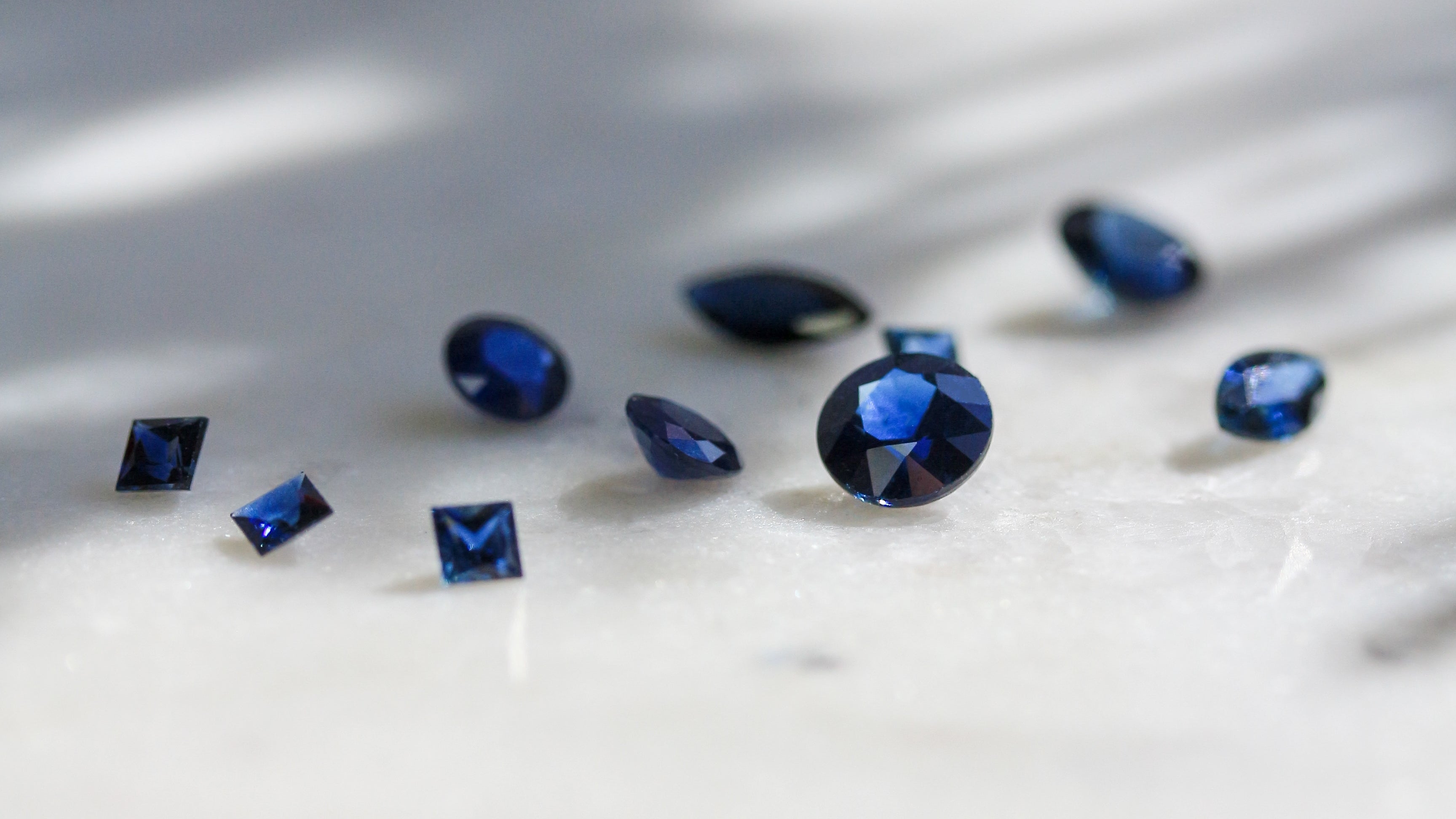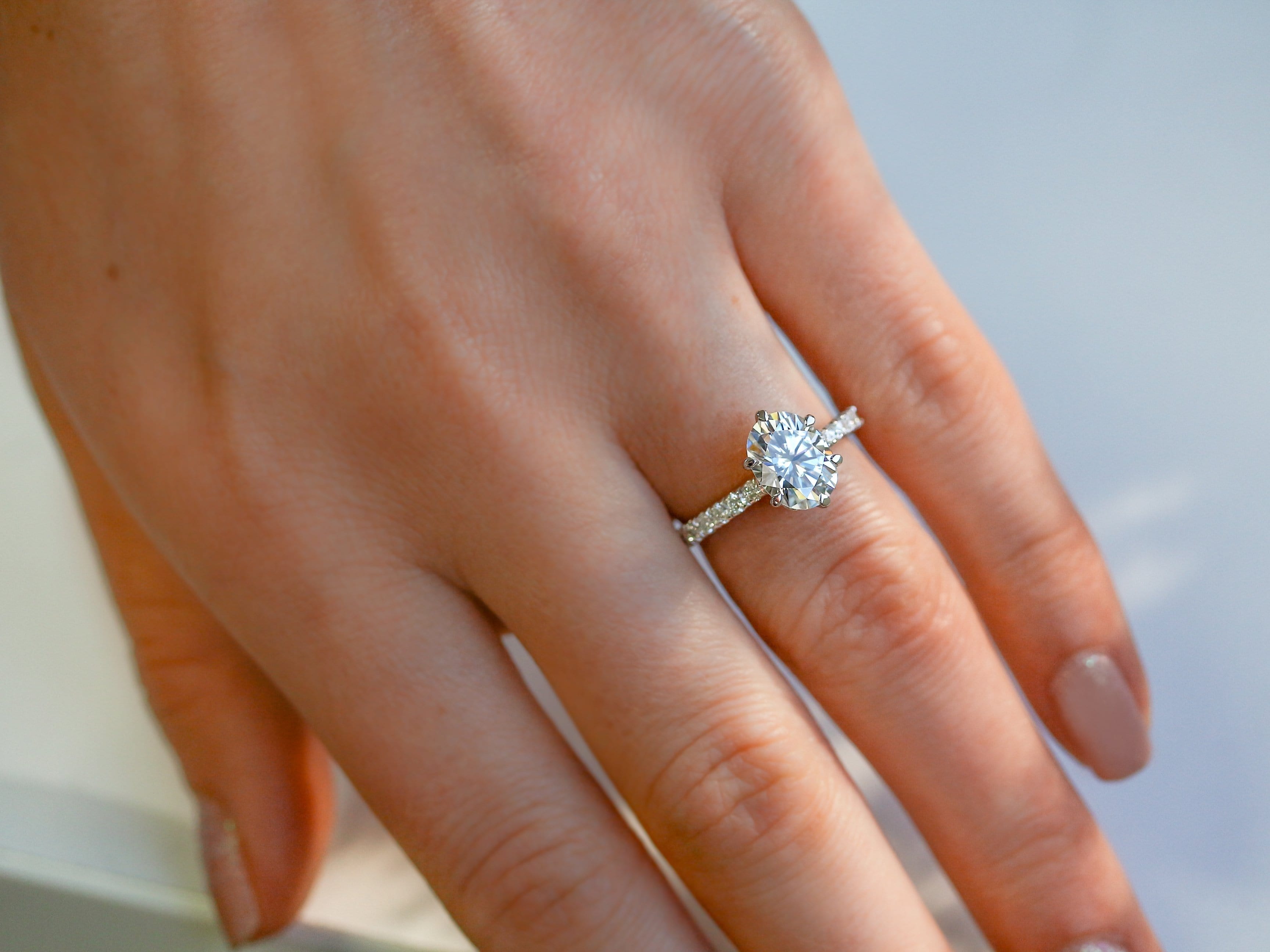Sapphire, a magnificent gem known as the September birthstone, but desired for its velvety cornflower blueness that can transform a lady’s look in a matter of seconds. As one of the numerous natural wonders, sapphire steals the show with its beauty, history, and significance in the world of jewelry-making, where it is immensely admired for its romantic warm and mystic quality. Since sapphire jewelry is one of the most popular gemstone alternatives to diamond jewelry, there has been an increased interest in finding out more about it. Following are the most frequently asked questions about the royal gem, the one and only – sapphire.
1. What is sapphire?
The basic question where this entire journey starts from – “What is sapphire?” In addition to being a precious stone, which we all already know, sapphire is a variety of the “corundum” mineral whose level of hardness is 9 on the Mohs scale. This makes it the third most durable precious stone, right after moissanite and diamond. Although corundum is a common mineral that can be found in abundance, “gem-quality” corundum is not. The origins of sapphire are even written in its name – “safir”, a Persian word that means “blue”.
2. Is blue the only sapphire color?
Rich, royal blue is definitely the signature color of sapphire jewelry, but it is not the only one. The sapphire gemstone occurs in other colors too, including yellow, orange, purple and green. They are popularly known as “fancy” sapphires. Today, most of these sapphire colors are obtained with special heat treatments, because naturally occurring fancy sapphires are both rare and tremendously expensive. And yes, white sapphires exist too.

3. Why is sapphire often compared with ruby?
It is true, we can often see sapphire and ruby put in the same basket and here is the reason why. Sapphire and ruby are incredibly similar gemstones, thanks to their chemical composition that is mainly based on the corundum presence. But, ruby has one special ingredient that sapphire does not and that is chromium. This element is the one responsible for ruby’s saturated red color and what essentially makes sapphire and ruby two different gemstone varieties. Therefore, sapphire can never appear red – a fact that helps a lot in gemstone identification.
4. How is sapphire formed?
Just like any other naturally occurring gemstone, sapphire occurs as a result of the various shifts, mixtures and chemical changes that happen on Earth. The process of sapphire formation starts with shifts in heat and pressure below the Earth’s surface and it takes millions of years for a single sapphire stone to be entirely developed and brought to the surface. This usually happens with volcanic eruptions and tectonic deformations, hence the explanation why the world’s largest deposits of sapphire are located near volcanoes or in areas prone to earthquakes.
5. Where do the most expensive sapphires come from?
The making of fine sapphire jewelry requires specimens of the highest quality, which are mined only in several locations in the world. They include Sri Lanka, Myanmar, Madagascar, Thailand, Tanzania, Cambodia, Australia and Montana (US). From all of them, Madagascar is considered today’s leading producer of fine-quality sapphire, remarkable for its richly saturated luxe-blue color.
6. What is Kashmir sapphire?
Kashmir is a one-of-a-kind blue sapphire variety that can be found only in one place on the planet and that is the Kashmir region in northern India. Kashmir sapphires come in limited production, due to their scarcity which imposes the risk of total disappearance. This sapphire variety takes pride in owning some fantastic features, such as the velvety softness that is incredibly desired in sapphire jewelry. The only inconvenience for interested buyers is that it is extremely difficult to be reached to. Even if you do, be prepared to hear some skyrocketing prices that are definitely not suitable for everyone’s budget. Just for the record, back in November 2013, a 20-carat Kashmir sapphire was sold on a Sotheby’s auction for, believe it or not, $8.358.520, meaning that a single Kashmir carat can fetch up to $175.821.

7. What is a star sapphire?
Another special member in the sapphire family, the star sapphire. It is distinctive for the six-rayed star phenomenon when the stone is exposed to direct light or it is rotated from different angles. The internal structure of star sapphire has needle-like inclusions made of rutile. This particular characteristic of sapphire makes it incredibly valued in gemology and consequently, on the gemstone marketplace. Star sapphires can be found in a spectrum of colors, ranging from blue to orange, pink, yellow, green and black. Again, the most desired and expensive look of a star sapphire is blue.
8. WHEN and WHERE was sapphire first discovered?
Historically, sapphire is an old colored gem that has been around for thousands of years. However, based on the available gemological information, the American sapphire discovery took place in Montana, 1865. A team of gold prospectors who were operating in the waters of the Missouri river came across a significant deposit of sapphire, which gave Montana its second most popular name – The Treasure State. These are said to be the first sapphires ever found on American soil. They come in a variety of vibrant colors and that is why they are still being called “Fancy Montana Sapphires”.
9. What is the average price of sapphire jewelry?
Funny or not, a single sapphire carat can be sold for as low as $20. Obviously, this cannot be considered a jewelry option, nor a gemstone that will stand for each and every one of the sapphire qualities. When it comes to buying sapphire jewelry, the feature that is paid most attention to is color. Therefore, the average price of a sapphire gemstone with a color grade of VS (Very Slow) comes with a price tag minimum of $300. This means that a purchase-worthy sapphire necklace or sapphire ring made of sterling silver can be found for less than $1.000. Isn’t that an amazing budget-friendly opportunity for a beautiful and enduring engagement ring?


